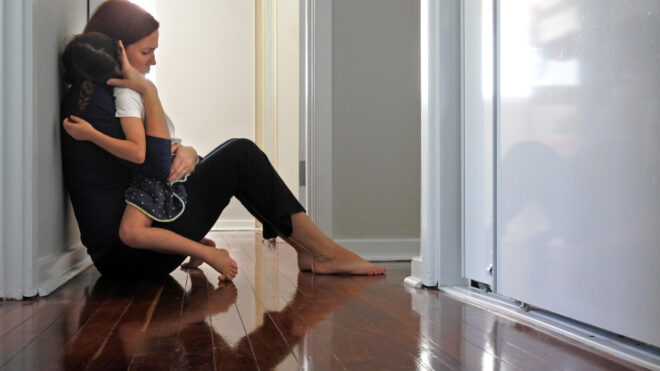It has taken almost a year, but the COVID-19 vaccination — which is supposed to help us all from getting the coronavirus — is in limited supply but slowly becoming more available. Some people have been excited about the release of the two vaccines by pharmaceutical companies Pfizer and Moderna, and they volunteered to be among the first ones to receive the vaccination. A pregnant ER doctor from Texas weighed her options and decided to get the vaccine when she was 35 weeks along.
Although most people are waiting for the COVID-19 vaccine to become available in their city, others are crossing state lines to receive it. Because there is no nationwide plan for distribution, people are traveling far and wide across the United States to get vaccinated. According to a New York Times article, because the goal is for everyone to be immune, some health officials aren’t going to stand in their way. Finally, there are also some people who are hesitant to get the vaccine and others who are choosing not to be vaccinated.
As of February 13, approximately 35.8 million people have received at least one dose of a COVID-19 vaccine and about 12.1 million of them have also received the second dose, according to the Centers for Disease Control and Prevention.
In December 2020, the CDC recommended that initial supplies of COVID-19 vaccine be allocated to health care personnel and long-term care facility residents.
These recommendations were made with the goals of “decreasing death and serious disease as much as possible, preserving the functioning of society, and reducing the extra burden COVID-19 is having on people already facing disparities.”
This was referred to as Phase 1a, and phases may overlap. Groups 1b and 1c were recommended next, and these groups include frontline essential workers such as police officers, firefighters, postal workers, corrections officers, teachers, grocery store workers, public transit workers, people 75 and older, and the like. Group 1c includes people aged 65 to 74, 16- to 64-year-olds who have underlying medical conditions, and other essential workers.
Phases 2 and 3, which have not been scheduled yet (but will likely begin in March and April), will include teachers, school staff and child care workers, critical workers in high-risk settings, people in facilities, and then young adults and children.
As vaccine availability increases, vaccination recommendations will expand to include more groups.
The goal is for everyone to be able to easily get a coronavirus vaccination as soon as large enough quantities of vaccine are available. As vaccine supply increases but remains limited, the Advisory Committee on Immunization Practices will expand the groups recommended for vaccination.
It’s also important to note that even though the CDC makes recommendations for who should be offered COVID-19 vaccine first, each state has its own plan for deciding who will be vaccinated first and how they can receive shots. That’s why a cousin in New York may have already received the vaccine at CVS pharmacy while you have no new updates at the moment on the availability of the vaccine in your town.
There are two vaccines already on the market in the United States from pharmaceutical companies Pfizer and Moderna.
These vaccines both had an efficacy rate in the mid-90s, and they require two shots spaced apart. Current data shows both the Pfizer and Moderna vaccines are 95% effective in preventing the person from getting COVID-19.
On February 10, Dr. Anthony Fauci, the government's top infectious disease specialist, concurred that the vaccines used in the United States are 95% effective when used as intended. Fauci also said a fully vaccinated person is apparently better able to fend off virus variants, so it makes sense to get people the maximum protection as quickly as possible.
Expectedly, the biggest concern about getting the vaccines is whether it’s safe.
As with any vaccine, there is the potential it will cause severe allergic reactions. According to the Henry Ford Health System, the Food and Drug Administration is required to make decisions guided by science and data regarding authorization or approval of COVID-19 vaccines. The FDA’s approval process is thorough, and it's committed to safety, quality, and high reliability.
After receiving the COVID-19 vaccine, you may have some side effects.
According to the CDC, the side effects are normal signs that your body is building protection. These side effects may affect your ability to do daily activities, but they should go away in a few days.
Common side effects:
- On the arm where your shot was administered, you may feel pain and show swelling.
- Throughout the rest of your body, you may feel a fever or chills, have a headache, and feel tired.
If these symptoms persist, the CCD has some recommendations to follow:
- For the swollen and/or sore arm, apply a clean, cool, wet cloth over the area. Move and exercise the arm a bit to relieve the stiffness.
- To reduce the pain and discomfort throughout the rest of your body, drink plenty of fluids and dress in light clothing (nothing too tight or restricting). Talk to your doctor for suggested over-the-counter medications you can take after the vaccination such as ibuprofen, acetaminophen, or aspirin.
“It is not recommended you take these medicines before vaccination for the purpose of trying to prevent side effects, because it is not known how these medications may impact how well the vaccine works,” the CDC noted.
There have been rare allergic reactions to the COVID-19 vaccine.
If you get a COVID-19 vaccine and think you might be having a severe allergic reaction after leaving the vaccination site, seek immediate medical care by calling 911.
The CDC has also learned of reports that some people have experienced non-severe allergic reactions within four hours after getting vaccinated (known as immediate allergic reactions) such as hives, swelling, and wheezing (respiratory distress).
If you have had an immediate allergic reaction — even if it was not severe — to any ingredient in an COVID-19 vaccine, the CDC recommended that you should not get either of the currently available vaccines. If you had an immediate allergic reaction after getting the first dose of an COVID-19 vaccine, you should not get the second dose. Your doctor may refer you to a specialist in allergies and immunology to provide more care or advice.
If you have had an allergic reaction to other types of vaccines, you should talk to your doctor before getting this one.
If you have had an immediate allergic reaction — even if it was not severe — to a vaccine or injectable therapy for another disease, ask your doctor if you should get a COVID-19 vaccine. Your physician will help you decide if it is safe for you to proceed.
If you have allergies that are not related to vaccines, you can get vaccinated.
The CDC recommends that people with a history of severe allergic reactions not related to vaccines or injectable medications — such as food, pet, venom, environmental, or latex allergies — get vaccinated. People with a history of allergies to oral medications or a family history of severe allergic reactions may also get the shots.
Everyone who gets a COVID-19 vaccine should be monitored on site.
People who have had severe allergic reactions or who have had any type of immediate allergic reaction to a vaccine or injectable therapy should be monitored for at least 30 minutes after getting the vaccine. All other people should be monitored for at least 15 minutes afterward. Stay at the site where you’ve had the vaccine administered until the recommended time has passed.
If you’ve had the coronavirus, you should still get vaccinated.
Studies have shown that if you already tested positive for COVID-19, you have likely developed specific antibodies in your blood which may provide some level of natural immune defense against the virus. Research is still being done both in the United States and globally to determine how long that immune response lasts.
The CDC recommends that those who have had COVID-19 get the vaccine because preliminary research suggests it will give you better protection than having had the virus.






